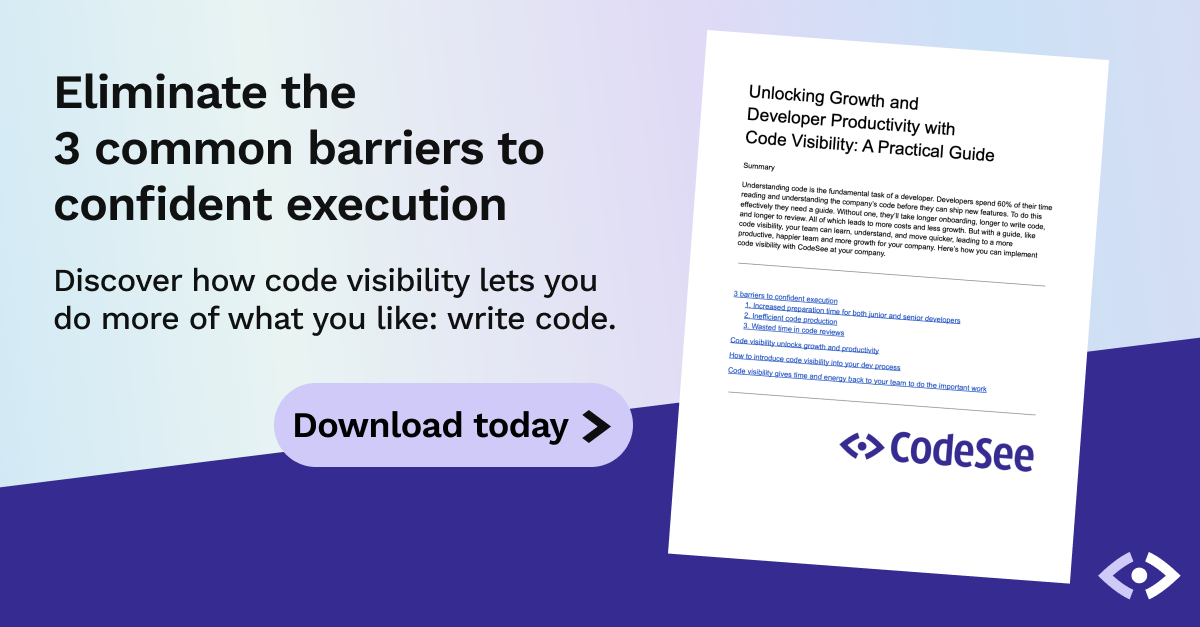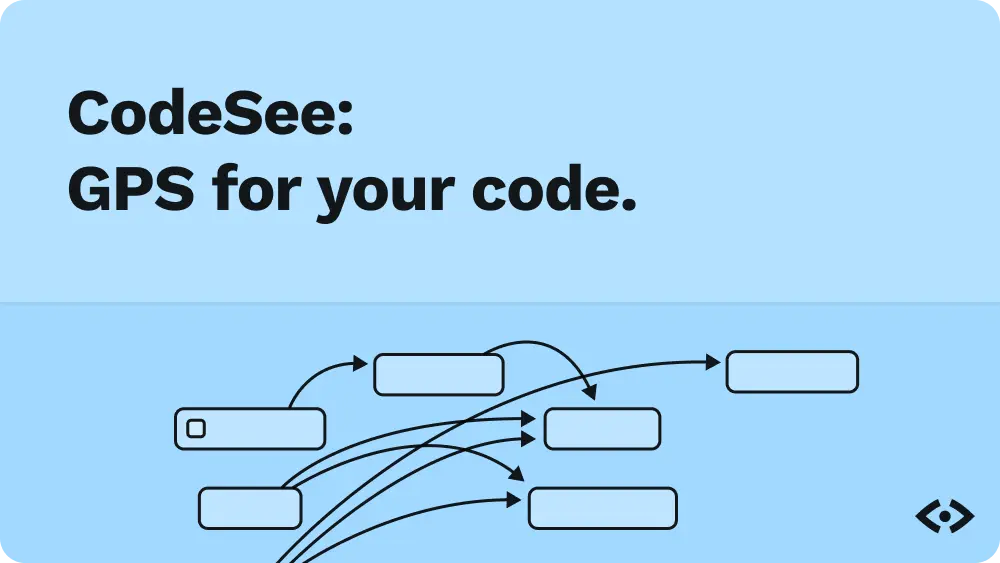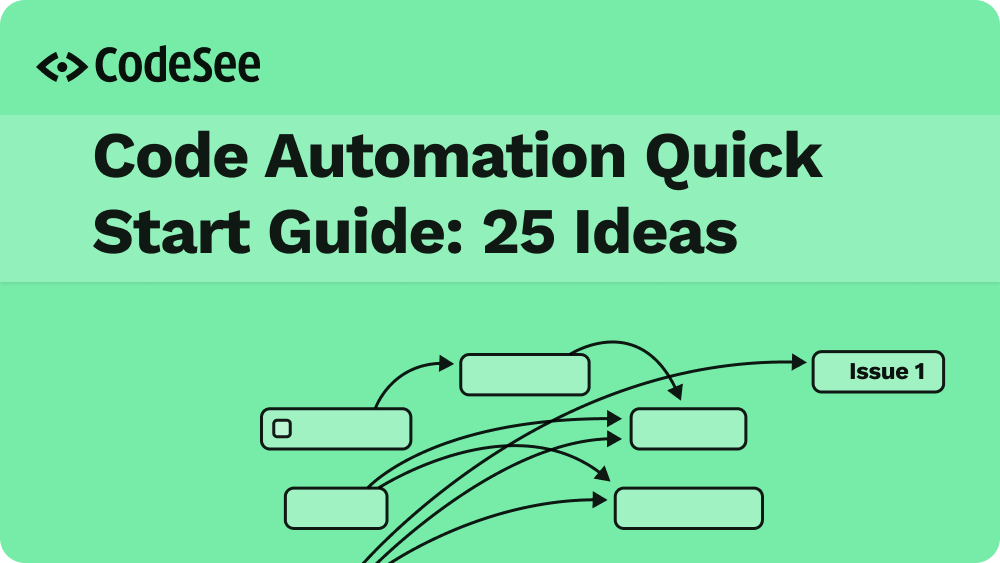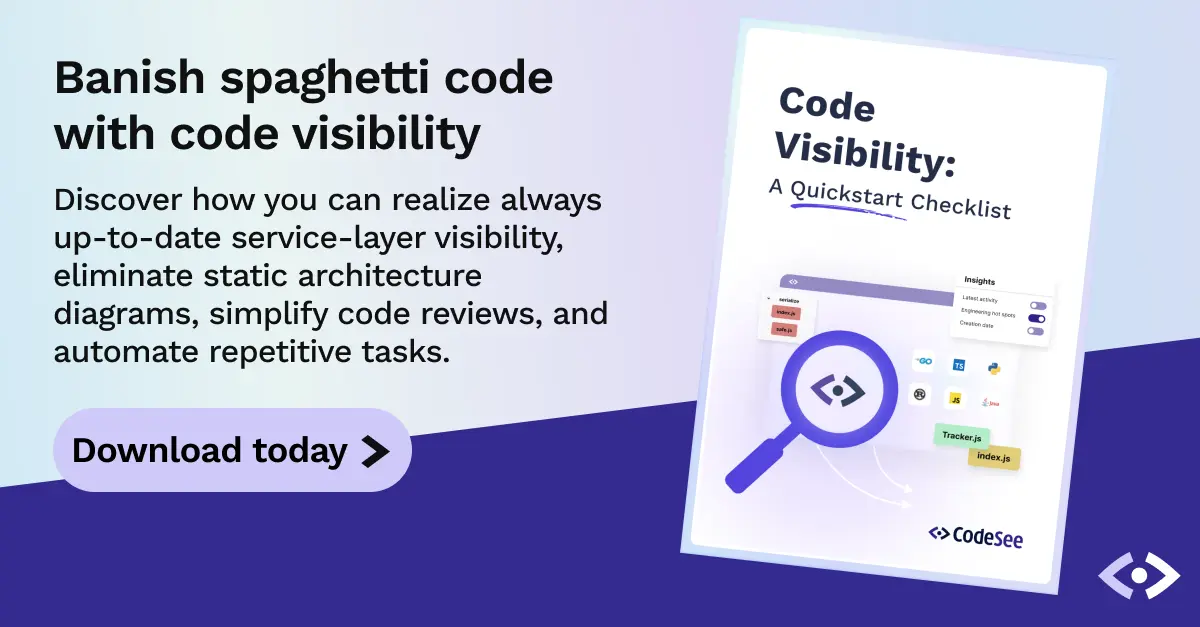Usually when you’re trying to get to a new destination, you need to know where you started to figure out how to get where you are going. But when we write code, understanding where we are, how our code works, why the code works the way that it does is like the days when we printed out directions instead of how it feels now when you use a GPS.
CodeSee is that GPS for your code workflow.
As of today, CodeSee is no longer just a map of your files — it’s a full code visibility platform. You can visualize your code, code knowledge, and pull requests (PRs) across repos and now across repo services. And, once you’ve merged your code, you also can automate all of that code knowledge in a way that won’t be super annoying.

Introducing CodeSee Enterprise
Today’s release reflects a vision we’ve had for CodeSee since day one — code as a Big Black Box that can only be understand by reading it line by line is no more.
Developers are expected to ship more code, faster than before, and yet, with ever greater quality at the same time. To meet these challenges, you need a tool that helps you get all of the ideas out of your head and on to the screen so that you and your team can reason about it.
At CodeSee, we want to give professional developers and dev ops engineers the ability to have an always accurate and up-to-date map of their codebase, beginning when you’re browsing and trying to understand the code. We want you to have this mental model whether you work in the code everyday or it’s your first day on the job. We’ll help you from keeping track of your code knowledge into the code review process and past to merging to a place that you can automate this knowledge for the rest of your org or simply just your future selves.
CodeSee is a code visibility platform that covers the entire lifecycle of your codebase from planning to coding and review to automating your organization’s processes and best practices. We’ve got a long way to go to achieve our mission which is to understand all of the code. But today’s release is a huge leap forward.
Because CodeSee fundamentally changes—or will change—how you and your organization bring ideas to life, let’s look at the new functionality one phase in the lifecycle of your codebase at a time.

Plan.
Before you start coding you have some idea of where you want to go—you just need to overlay that with an understanding of what the codebase does and why. Seems straightforward enough, yet, where to begin isn't necessarily so.
Think of code as a series of layers: at the top are services, next packages, and then directories and files. The answers to your questions are out there, but at which level of the codebase?
With CodeSee Service Maps (available on Enterprise plans only), CodeSee removes the guesswork. We automatically detect your services and connect them to where they appear in the code.

Going a layer deeper you have packages, directories, and files. At this layer CodeSee Codebase Maps—fully interactive and editable diagrams—help you get the lay of the land and are how you discover and explore your code. Hide or reveal code to surface unknown impacts as you inspect the connections between files and directories. We currently support dependency mapping in Go, Java, JavaScript, Python, TypeScript, and now Rust (beta).
With CodeSee Service Maps (available on Enterprise plans only) and CodeSee Codebase Maps, you can see dependencies between files and across service maps.
Review.
With CodeSee Review Maps, you choose how to start your review—using a visual map of your change to guide you instead of a list of alphabetically organized files.
Using the CodeSee extension for Visual Studio you can do all of this within your editor. First, you’ll need to install the CodeSee Review Maps VS Code extension. You can find it in the Visual Studio Marketplace. PRs that predate the extension will not have a Review Map readily available until a new commit is made. To learn more about CodeSee Review Maps, check out our Review Map Guide.
Automate.
CodeSee Code Automation is now available with Enterprise plans and works for all languages. If you’re on our Business plan, you have access to one per repo.
Code Automations watch as your code changes and before those changes are merged, assigns exactly the right team to review and alerts developers with reminders, checklists, and warnings. Go beyond stale documentation and incomplete tribal knowledge to reliably scale and enforce processes and best practices across your organization.

With CodeSee Code Automation, create triggers that look for specific changes in PRs and when those conditions are met, perform a specific action or set of actions. Decide whether you want triggers to act on draft PRs or only PRs that are ready for review.
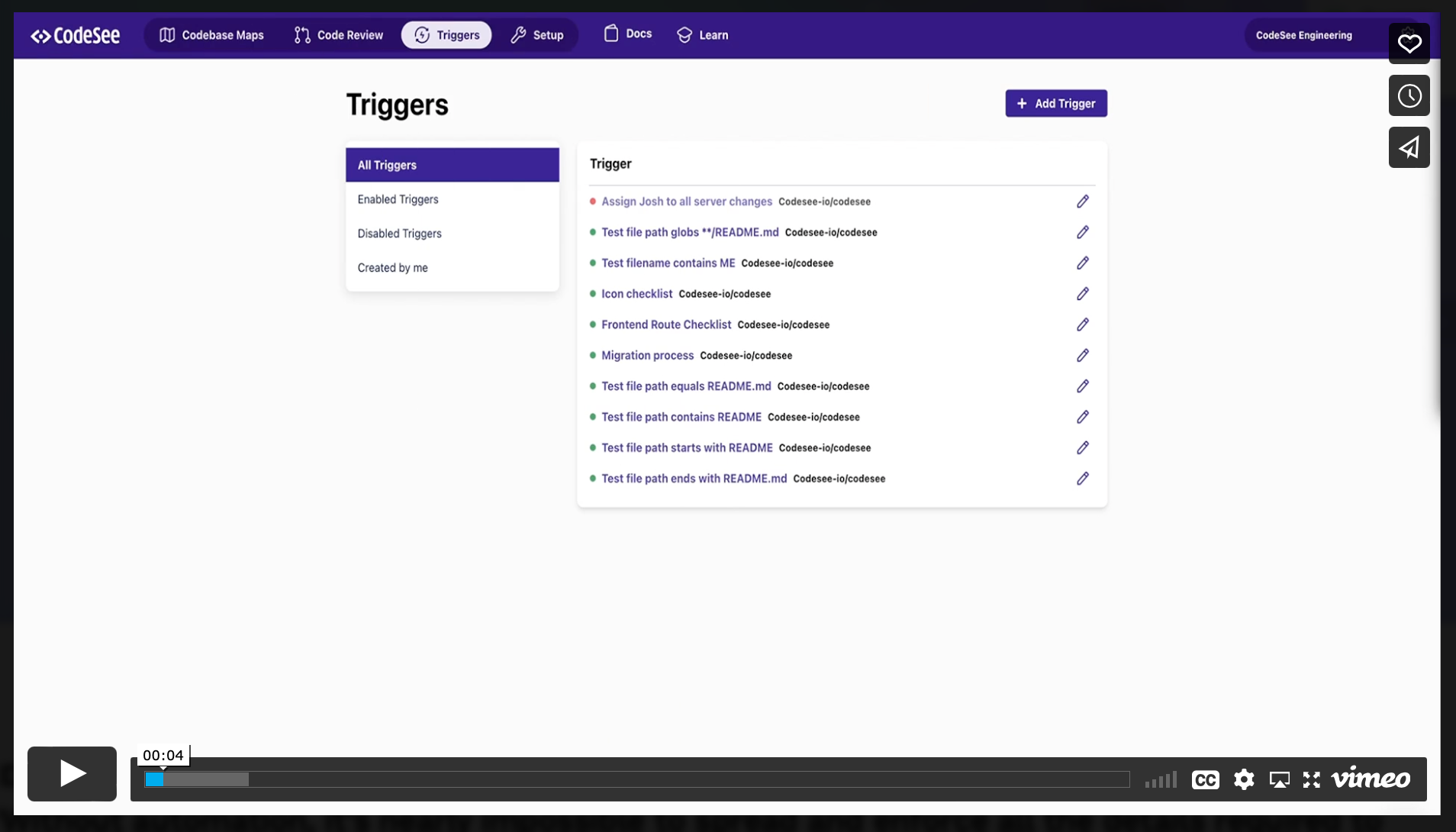
Triggers execute based on conditions you select. Two filters are currently supported: changes in file paths, file names, or folder content. Four actions are currently supported: post a comment; add a checklist item; assign a pull request; and assign a reviewer. Browse through sample trigger templates (scroll to bottom of page) for ideas. For information on how to create a trigger, refer to our Create a Code Automation documentation.
To learn more about Code Automations, check out our Code Automations overview guide. Contact us if you’d like to get started automating the knowledge kept in the heads of your engineers.
Protect.
Your codebase is the lifeblood of your organization, and as such you want to secure it. With this release, you can determine who has visibility into your code.
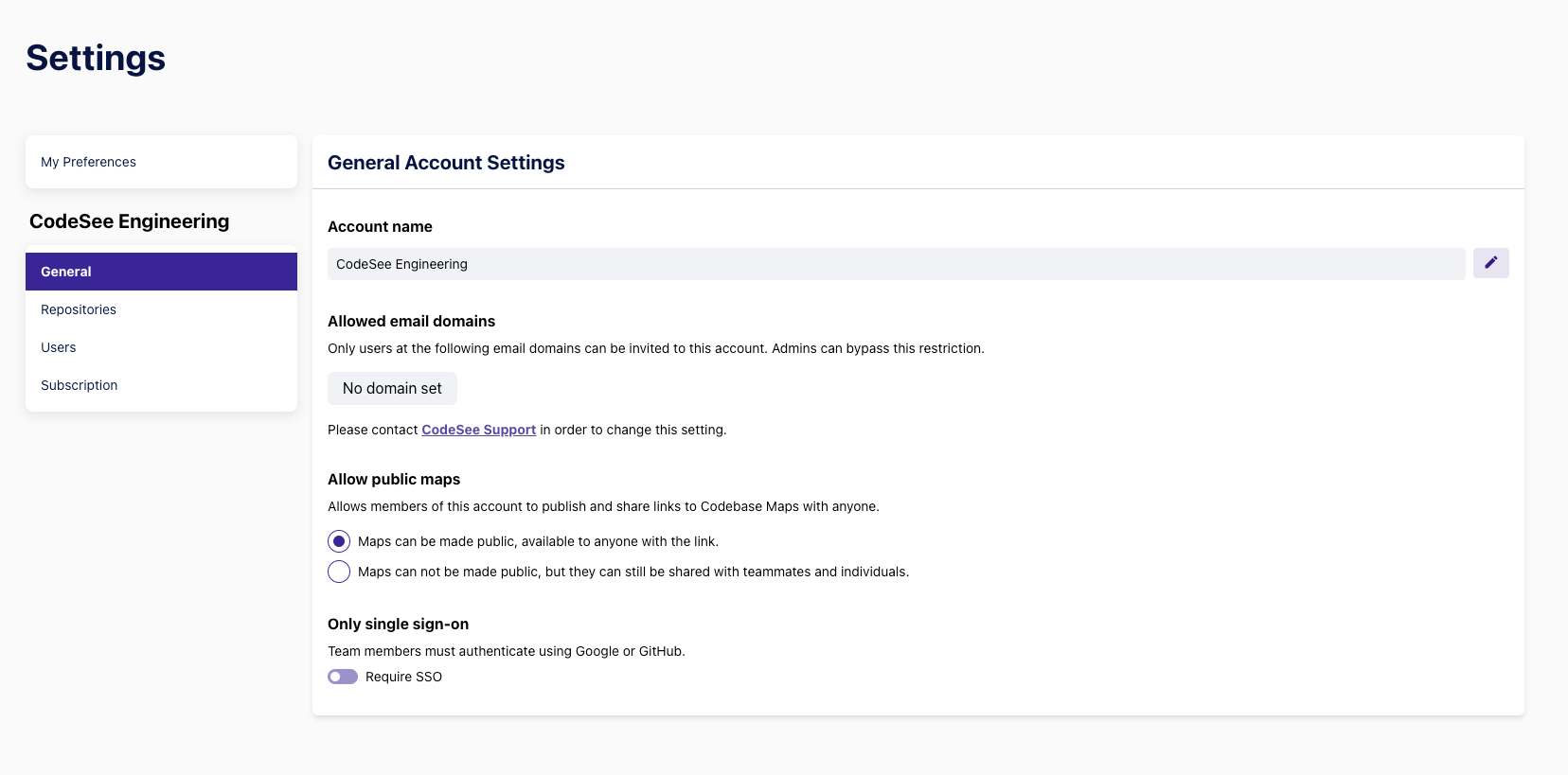
The following premium security features are available:
- Domain enforcement. Restrict who can be invited to your CodeSee account. (Both the account Owner and account Admins can bypass this restriction.)
- Ability to disable publishing Codebase Maps publicly. By default, the Codebase Maps you create are private. When public maps are disabled, maps can’t be shared outside your organization.
- Single-sign on authentication. Once enabled by your workspace admin, you’ll only be able to login using SSO. Now if an account is disabled, that person won’t be able to access CodeSee either.
- On premise. Available on with Enterprise plans, you can host CodeSee onsite at your organization.
Learn more about our premium security features available with both Business and Enterprise plans.

Looking ahead
We are very excited about this release and look forward to your feedback. We can’t wait to see what you build next!
To get started with code visibility and Code Automation across your organization or on prem installation, complete the form below and we’ll get in touch.
Have additional questions? Check out our FAQ.
